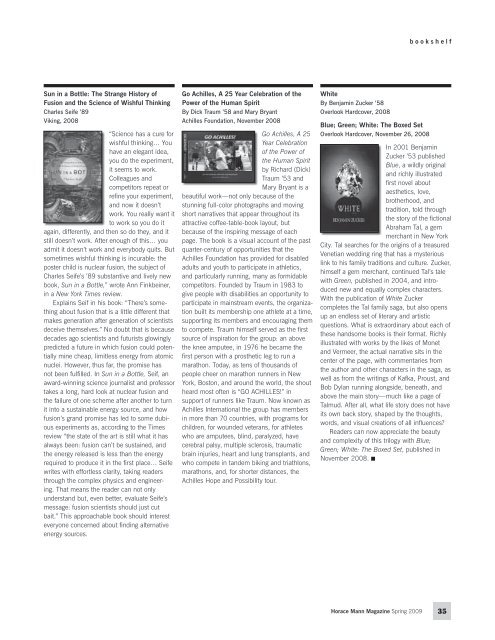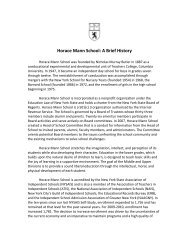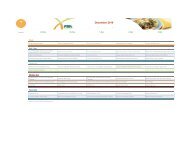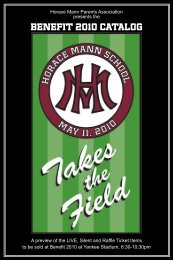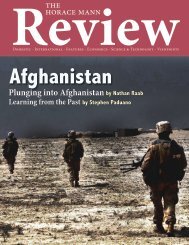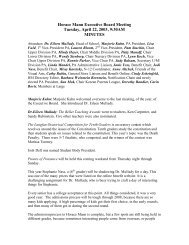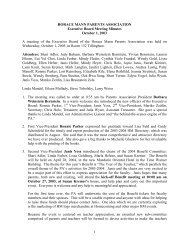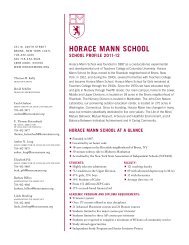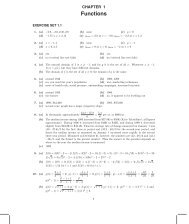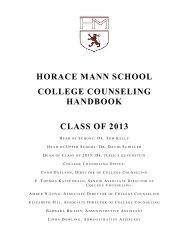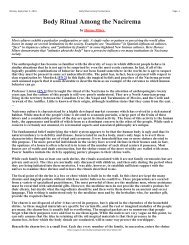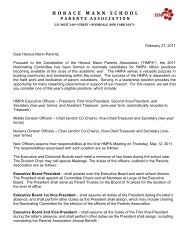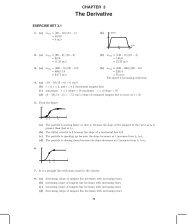Create successful ePaper yourself
Turn your PDF publications into a flip-book with our unique Google optimized e-Paper software.
ookshelf<br />
Sun in a Bottle: The Strange History of<br />
Fusion and <strong>the</strong> Science of Wishful Thinking<br />
Charles Seife ’89<br />
Viking, 2008<br />
“Science has a cure for<br />
wishful thinking… You<br />
have an elegant idea,<br />
you do <strong>the</strong> experiment,<br />
it seems to work.<br />
Colleagues and<br />
competitors repeat or<br />
refine your experiment,<br />
and now it doesn’t<br />
work. You really want it<br />
to work so you do it<br />
again, differently, and <strong>the</strong>n so do <strong>the</strong>y, and it<br />
still doesn’t work. After enough of this… you<br />
admit it doesn’t work and everybody quits. But<br />
sometimes wishful thinking is incurable: <strong>the</strong><br />
poster child is nuclear fusion, <strong>the</strong> subject of<br />
Charles Seife’s ’89 substantive and lively new<br />
book, Sun in a Bottle,” wrote Ann Finkbeiner,<br />
in a New York Times review.<br />
Explains Seif in his book: “There’s something<br />
about fusion that is a little different that<br />
makes generation after generation of scientists<br />
deceive <strong>the</strong>mselves.” No doubt that is because<br />
decades ago scientists and futurists glowingly<br />
predicted a future in which fusion could potentially<br />
mine cheap, limitless energy from atomic<br />
nuclei. However, thus far, <strong>the</strong> promise has<br />
not been fulfilled. In Sun in a Bottle, Seif, an<br />
award-winning science journalist and professor<br />
takes a long, hard look at nuclear fusion and<br />
<strong>the</strong> failure of one scheme after ano<strong>the</strong>r to turn<br />
it into a sustainable energy source, and how<br />
fusion’s grand promise has led to some dubious<br />
experiments as, according to <strong>the</strong> Times<br />
review “<strong>the</strong> state of <strong>the</strong> art is still what it has<br />
always been: fusion can’t be sustained, and<br />
<strong>the</strong> energy released is less than <strong>the</strong> energy<br />
required to produce it in <strong>the</strong> first place… Seife<br />
writes with effortless clarity, taking readers<br />
through <strong>the</strong> complex physics and engineering.<br />
That means <strong>the</strong> reader can not only<br />
understand but, even better, evaluate Seife’s<br />
message: fusion scientists should just cut<br />
bait.” This approachable book should interest<br />
everyone concerned about finding alternative<br />
energy sources.<br />
Go Achilles, A 25 Year Celebration of <strong>the</strong><br />
Power of <strong>the</strong> Human Spirit<br />
By Dick Traum ’58 and Mary Bryant<br />
Achilles Foundation, November 2008<br />
Go Achilles, A 25<br />
Year Celebration<br />
of <strong>the</strong> Power of<br />
<strong>the</strong> Human Spirit<br />
by Richard (Dick)<br />
Traum ’53 and<br />
Mary Bryant is a<br />
beautiful work—not only because of <strong>the</strong><br />
stunning full-color photographs and moving<br />
short narratives that appear throughout its<br />
attractive coffee-table-book layout, but<br />
because of <strong>the</strong> inspiring message of each<br />
page. The book is a visual account of <strong>the</strong> past<br />
quarter-century of opportunities that <strong>the</strong><br />
Achilles Foundation has provided for disabled<br />
adults and youth to participate in athletics,<br />
and particularly running, many as formidable<br />
competitors. Founded by Traum in 1983 to<br />
give people with disabilities an opportunity to<br />
participate in mainstream events, <strong>the</strong> organization<br />
built its membership one athlete at a time,<br />
supporting its members and encouraging <strong>the</strong>m<br />
to compete. Traum himself served as <strong>the</strong> first<br />
source of inspiration for <strong>the</strong> group: an above<br />
<strong>the</strong> knee amputee, in 1976 he became <strong>the</strong><br />
first person with a pros<strong>the</strong>tic leg to run a<br />
marathon. Today, as tens of thousands of<br />
people cheer on marathon runners in New<br />
York, Boston, and around <strong>the</strong> world, <strong>the</strong> shout<br />
heard most often is “GO ACHILLES!” in<br />
support of runners like Traum. Now known as<br />
Achilles International <strong>the</strong> group has members<br />
in more than 70 countries, with programs for<br />
children, for wounded veterans, for athletes<br />
who are amputees, blind, paralyzed, have<br />
cerebral palsy, multiple sclerosis, traumatic<br />
brain injuries, heart and lung transplants, and<br />
who compete in tandem biking and triathlons,<br />
marathons, and, for shorter distances, <strong>the</strong><br />
Achilles Hope and Possibility tour.<br />
White<br />
By Benjamin Zucker ’58<br />
Overlook Hardcover, 2008<br />
Blue; Green; White: The Boxed Set<br />
Overlook Hardcover, November 26, 2008<br />
In 2001 Benjamin<br />
Zucker ’53 published<br />
Blue, a wildly original<br />
and richly illustrated<br />
first novel about<br />
aes<strong>the</strong>tics, love,<br />
bro<strong>the</strong>rhood, and<br />
tradition, told through<br />
<strong>the</strong> story of <strong>the</strong> fictional<br />
Abraham Tal, a gem<br />
merchant in New York<br />
City. Tal searches for <strong>the</strong> origins of a treasured<br />
Venetian wedding ring that has a mysterious<br />
link to his family traditions and culture. Zucker,<br />
himself a gem merchant, continued Tal’s tale<br />
with Green, published in 2004, and introduced<br />
new and equally complex characters.<br />
With <strong>the</strong> publication of White Zucker<br />
completes <strong>the</strong> Tal family saga, but also opens<br />
up an endless set of literary and artistic<br />
questions. What is extraordinary about each of<br />
<strong>the</strong>se handsome books is <strong>the</strong>ir format. Richly<br />
illustrated with works by <strong>the</strong> likes of Monet<br />
and Vermeer, <strong>the</strong> actual narrative sits in <strong>the</strong><br />
center of <strong>the</strong> page, with commentaries from<br />
<strong>the</strong> author and o<strong>the</strong>r characters in <strong>the</strong> saga, as<br />
well as from <strong>the</strong> writings of Kafka, Proust, and<br />
Bob Dylan running alongside, beneath, and<br />
above <strong>the</strong> main story—much like a page of<br />
Talmud. After all, what life story does not have<br />
its own back story, shaped by <strong>the</strong> thoughts,<br />
words, and visual creations of all influences?<br />
Readers can now appreciate <strong>the</strong> beauty<br />
and complexity of this trilogy with Blue;<br />
Green; White: The Boxed Set, published in<br />
November 2008. $<br />
<strong>Horace</strong> <strong>Mann</strong> Magazine Spring 2009<br />
35


